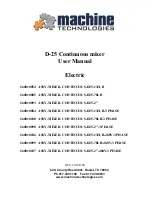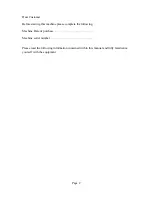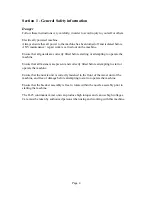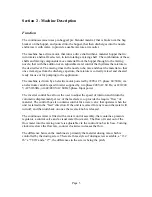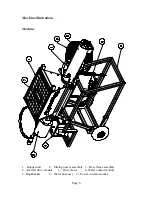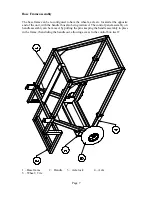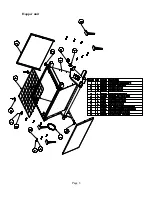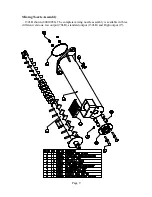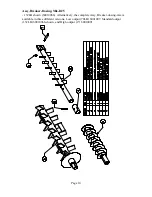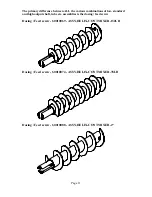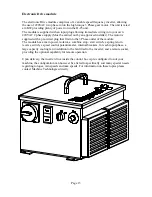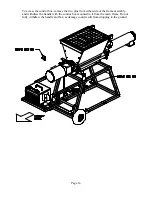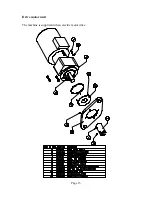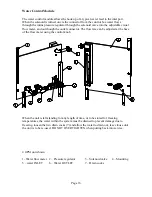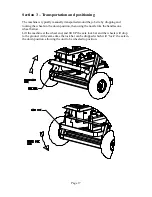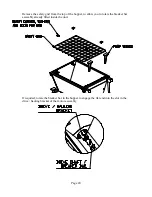
Page 5
Section 2 - Machine Description
Function
The continuous mixer uses pre-bagged, pre blended material, that is broken via the bag
breaker on the hopper, and poured into the hopper, that then discharges into the nozzle
and mixes it with water, to provide a usable mixture at its outlet.
The machine has a drive motor, that turns a drive shaft within a material hopper that in
turn rotates a helical feed screw, in turn rotating a mixing shaft. The combination of these
shafts and mixing components move material from the hopper through to the mixing
nozzle, that with the addition of an adjustable water control that hydrates the mixture to
the desired level. The mixing tines in the nozzle tube, mix and shear the material so that
once it emerges from the discharge aperture, the mixture is correctly mixed and sheared
ready for use or for pumping to the application.
The machine is driven by an electric motor powered by 220VAC 3 phase 60/50Hz, via
an electronic variable speed inverter supplied by two phase 208VAC 60 Hz, or 220/240
VAC 50/60Hz, or 440/480 VAC 60Hz 3phase. Input power
The inverter control box allows the user to adjust the speed of rotation and in turn the
volumetric displacement per rev of the feed screw, to provide the require “flow” of
material. The control box also contains control for a water valve that operates when the
unit is started in the “feed” direction. If the unit is reversed for any reason the water will
turn off, and then turn back on once the reverse knob is released.
The continuous mixer is fitted with a water control assembly, that contains a pressure
regulator, a control valve and a visual water flow meter. The flow of water out of the
flow meter into the mixing nozzle is adjustable via the control knob at its base. Turning
clockwise slows the flow rate, counter clockwise increases the flow.
The difference between the machines is primarily the material dosing rate, which is
controlled by the dosing screw. There are three styles of dosing screw available, a “132
lb” a “78 lb” and a “2””, the differences in the screws being the pitch.

